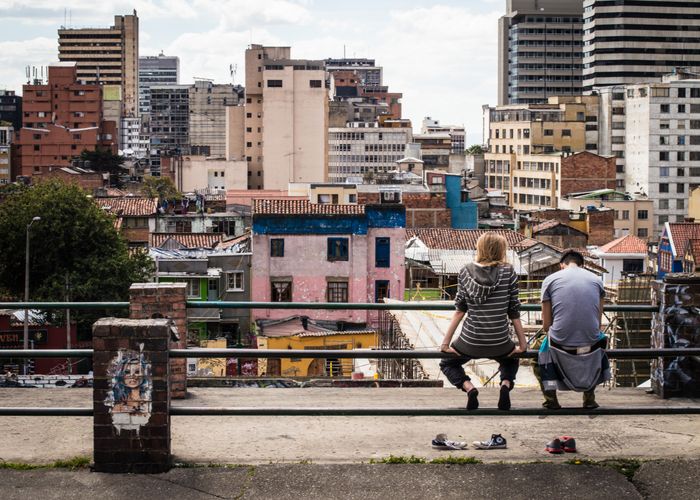
Photo by Delaney Turner on Unsplash
I watched Cities on Speed: Bogota Change (2009) a long time ago and got to know a little bit about the famous mayor Enrique Peñalosa in the capital of Columbia. My knowledge about Bogota was although not nearly enough to make sense of the city during my short stay there. Luckily I have a local architect friend who was kind enough to walk through the city with me with a full of local tips. Here are the list of things I learned from the talented Columbian architect Ricardo Torres Gomez, as well as things I found by myself about the capital of Columbia.
Things to do, places to go
-
Parque Bicentenario is an urban park in the heart of Bogota, which was one of our first spots to stop with Ricardo. Designed by a Columbian architect Giancarlo Mazzanti and inaugurated in 2016, Parque Bicentenario passes over Avenida El Dorado, one of the major vehicular arteries in Bogota. The city was (and still is) divided between the north part and the south, creating serious polarization and social inequality — this park was thus designed in a hope to create natural connectivities and revitalize downtown.
-
I personally think Biblioteca Virgilio is, without a doubt, one of the most beautiful libraries in the world. It was designed by a famous Colombian architect Rogelio Salmona. The building has a fascinating circular structure, carefully designed to create a seamless landscape with the surrounding park and fountains.
-
Every Sunday in Bogota, you can enjoy car-free Ciclovía. 112km of roads that stretches from the south to the north are closed up for cars, allowing cyclists and runners to take over the streets. The program was created and promoted in the 1990s and early 2000s, under Bogotá Mayor Enrique Peñalosa and his brother Gil Peñalosa. Gil Peñalosa now has a non-profit organization called 880cities that is entirely dedicated to the topic of urban mobility.
-
I usually avoid taking tours when I travel, but Bogota Graffiti Tour was incredibly informative and definitely worth the time and money. They explain not only about the artistic elements of Bogota's Graffiti, but also their politics. Take a tour and visit Parque de la Candelaria to study the richness of their art. By the way, there are various theories about the Graffities culture in this city, but it is ABSOLUTELY NOT true that Justin Bieber's visit to Bogota opened doors for Colombian graffiti artists.
-
In downtown, you can walk past the spot where Jorge Eliécer Gaitán was assassinated in 1948 on April 9 — when at same afternoon he had had a meeting scheduled with young Fidel Castro. You might notice his still strong presence, on graffiti in the street or on the thousand-peso note in your pocket.
-
BD Bacatá is the world's first crowdfunded skyscraper that sticks out in downtown Bogota, and also Colombia’s tallest building. They started the construction in 2011, and 8 years later in 2019, this tower is somehow still far from completion due to a financial situation of a stakeholder. The building has a pensive look, waiting for investors and residents to move in in the possible future.
Read
-
Mike's Bogota Blog might be a great introduction to the city from an urbanist's perspective. Bogota Times is also a good English resources to get a gist of the city.
-
Before visiting Bogota by myself, I always thought Enrique Peñalosa was the coolest hero who saved Bogota from being "the most dangerous city in the world". However, after talking to some local urbanists, I found out that it's not as black and white as that. It might be time to Rethink the Legacy of Enrique Peñalosa?, including his creation TransMilenio.
→ Watch his TED talk again: Why buses represent democracy in action -
Pictures of Bogotá’s architecture from the sky captured by a drone are surprisingly beautiful.
-
Did you know that Le Corbusier came to Bogotá in 1947, and had a master plan for Columbia's capital city? It might be questionable if we could call Bogota as "Le Corbusier City", but it is surely interesting to look at the contrast between the urban development proposal of Le Corbusier to the current layout and reality of the city.
-
La Playa DC is an interesting movie that illustrates a life of Afro-Colombian teenager, whose family fled from the country's Pacific coast to Bogota due to the violence. I personally think the movie did a great job to depict exclusion and racism in the city.


